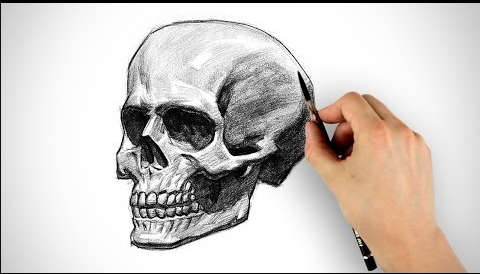Drawing skulls is a time-honored tradition in art, often serving as both a technical exercise and a symbol of deeper themes. The keyword “drawing= skull” refers to a specific type of skull illustration that may be recognized in various art and design contexts. This article delves into the intricacies of drawing:oldj_7nsvxk= skull, exploring the techniques, symbolism, and historical significance, as well as providing a comprehensive guide on how to approach this artistic endeavor.
Art Of Drawing:Oldj_7nsvxk= Skull
Skull drawings have fascinated artists for centuries. From Renaissance masterpieces to modern painting, the human skull has been a central subject due to its complexity and symbolic nature. The drawing:oldj_7nsvxk= skull is a particular style or method that may incorporate unique elements or techniques. Understanding the anatomy of the skull is crucial in mastering this art form.
Anatomy of the Skull
To draw a skull accurately, one must understand its anatomy. The human skull is composed of 22 bones, which can be categorized into the cranium and the facial bones. Key parts include:
- Cranium: The upper part of the skull that encases the brain.
- Mandible: The lower jawbone, which is movable.
- Maxilla: The upper jawbone, which is fixed.
- Zygomatic Bones: The cheekbones.
- Nasal Cavity: The space behind the nose.
Anatomical accuracy in skull drawing requires a deep understanding of these structures, as they affect the overall shape and proportion of the skull.
Techniques For Drawing:Oldj_7nsvxk= Skull
- Basic Structure: Start with a rough outline of the skull’s shape. Use simple geometric shapes like circles and ovals to sketch the basic proportions.
- Adding Details: Refine your drawing by adding details such as the eye sockets, nasal cavity, and teeth. Pay close attention to the contours and shadows to create a three-dimensional effect.
- Shading and Texture: Shading is crucial for realism. Use a range of pencils to create gradients and textures that mimic the skull’s surface. Soft pencils (like 2B or 4B) are excellent for darker areas, while harder pencils (like H or 2H) are better for lighter areas.
- Refinement: Erase any unnecessary lines and refine the details. Ensure that the proportions and perspectives are correct. This step is essential for a polished and professional-looking skull drawing.
- Final Touches: Add any final details or adjustments. This might include emphasizing certain areas to enhance depth or adding texture to mimic bone.
Symbolism of Skulls in Art
Skulls have been a powerful symbol across various cultures and artistic movements. They often represent mortality, the passage of time, or the idea of human vulnerability. Here are some notable contexts:
- Memento Mori: This Latin phrase translates to “Remember you must die.” It is a theme in art that uses skulls to remind viewers of their mortality.
- Vanitas: A genre of still-life painting that includes skulls to symbolize the fleeting nature of life and earthly pleasures.
Also, explore
Historical Context of Skull Drawings
Skull drawings have evolved through history, reflecting changes in artistic styles and cultural attitudes:
- Renaissance: Artists like Leonardo da Vinci meticulously studied skull anatomy, contributing to the scientific and artistic understanding of human anatomy.
- Victorian Era: Skulls were often used in Gothic art and literature to evoke themes of death and the macabre.
- Modern Art: Contemporary artists use skulls to explore various themes, from danger zones to personal identity.
Drawing:Oldj_7nsvxk= Skull– A Unique Approach
The term Drawing:Oldj_7nsvxk= Skull may refer to a specific style or technique of skull illustration. While the exact details of this style are not universally known, it could involve unique elements such as:
- Abstract Elements: Incorporating abstract forms or patterns within the skull.
- Mixed Media: Using various materials or techniques, such as digital tools combined with traditional drawing methods.
- Cultural Influences: Integrating motifs from different cultures or historical periods into the skull design.
Practical Tips for Creating Your Own Skull Drawing
- Gather References: Study various skull images and artworks to understand different styles and techniques. Use anatomy books or online resources for accurate references.
- Practice Regularly: Drawing skulls requires practice. Experiment with different techniques and styles to develop your skills.
- Seek Feedback: Share your artwork with peers or mentors to receive constructive criticism. This feedback can be invaluable for enhancing and perfecting your technique.
- Experiment: Don’t be afraid to experiment with different mediums, such as charcoal, ink, or digital tools. Each medium can offer unique effects and textures.
- Stay Inspired: Look for inspiration in art history, contemporary works, or even nature. Inspiration can help you develop your unique style and approach to drawing skulls.
Conclusion
Drawing skulls, including the specific Drawing:Oldj_7nsvxk= Skull is a rich and multifaceted art form. By understanding the anatomy of the skull, mastering various drawing techniques, and exploring the symbolism and historical context, artists can create compelling and meaningful skull illustrations. Whether you’re a beginner or an experienced artist, engaging with this timeless subject offers both technical challenges and opportunities for creative expression. Embrace the process, experiment with different styles, and let the skull be a canvas for your artistic exploration.
